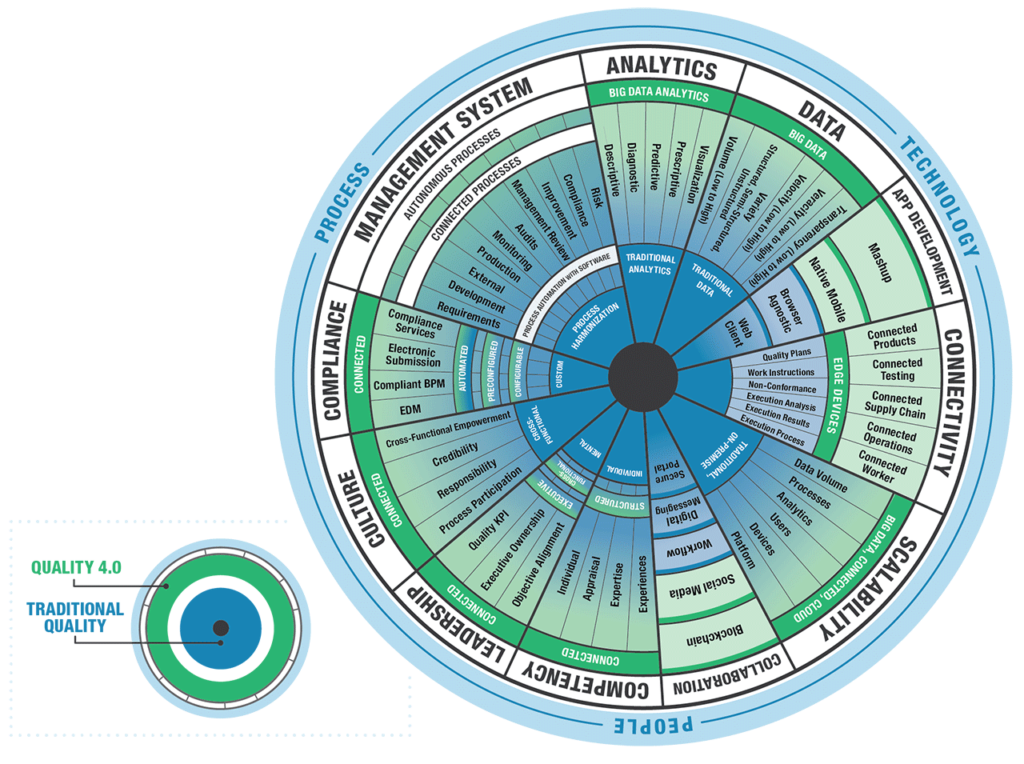Quick intro video of the article:
As my continuous investigation about Quality 4.0 , I wanted to share some differences and challenges I found them interesting for people are working in Software Development Industry.
Data-driven vs Inspection-based:
Traditional Quality: Traditional quality management relies heavily on inspection and testing at the end of the production process to identify defects. Quality control is often a manual and reactive process, focusing on identifying and rectifying issues after they occur.
Quality 4.0: Quality 4.0 adopts a data-driven approach, leveraging digital technologies and real-time data analytics throughout the entire production process. It emphasizes proactive monitoring, predictive analysis, and early detection of quality issues, enabling organizations to take preventive measures and continuously improve processes. This is quite similar with the Shift Left Approach for software testing.
Technology Adoption:
Traditional Quality: Traditional quality management methods typically use manual and labor-intensive approaches, with limited utilization of technology. The focus is often on human expertise and experience in identifying and resolving quality problems.
Quality 4.0: Quality 4.0 embraces advanced technologies such as AI, machine learning, IoT, and big data analytics. These technologies enable automation, real-time data collection, and analysis, empowering organizations to make data-informed decisions and optimize quality management processes. This is a real example of how Test Automation can improve the whole process of software products.
Process Integration:
Traditional Quality: Traditional quality management processes are often isolated from other aspects of production, such as supply chain management and customer feedback. Communication and collaboration between different departments may be limited.
Quality 4.0: Quality 4.0 emphasizes the integration and connectivity of various systems, including production processes, supply chains, and customer feedback loops. The interconnectedness of these systems allows for seamless data exchange, enhanced collaboration, and a holistic approach to quality management. Customer feedback is a crucial thing if you are working with Agile Methodology on software development.
Reactive vs. Proactive:
Traditional Quality: Traditional quality management tends to be reactive, addressing quality issues after they arise. Corrective actions are taken after defects are identified during inspections or when customer complaints are received.
Quality 4.0: Quality 4.0 promotes a proactive approach to quality management. By leveraging real-time data and predictive analytics, organizations can anticipate and prevent quality issues before they occur, leading to higher efficiency and better product quality.
Customer Focus:
Traditional Quality: While customer satisfaction is considered essential, traditional quality management may lack direct and continuous customer engagement throughout the production process.
Quality 4.0: Quality 4.0 places a strong emphasis on customer-centricity. Organizations actively engage with customers, collect feedback, and use data insights to tailor products and services to meet customer needs and expectations.
In summary, the key differences between traditional quality management and Quality 4.0 lie in their approach to data usage, technology adoption, process integration, proactive vs. reactive methods, and customer focus. Quality 4.0 represents a more modern, data-driven, and technology-enabled approach to quality management, fostering continuous improvement and customer satisfaction.

